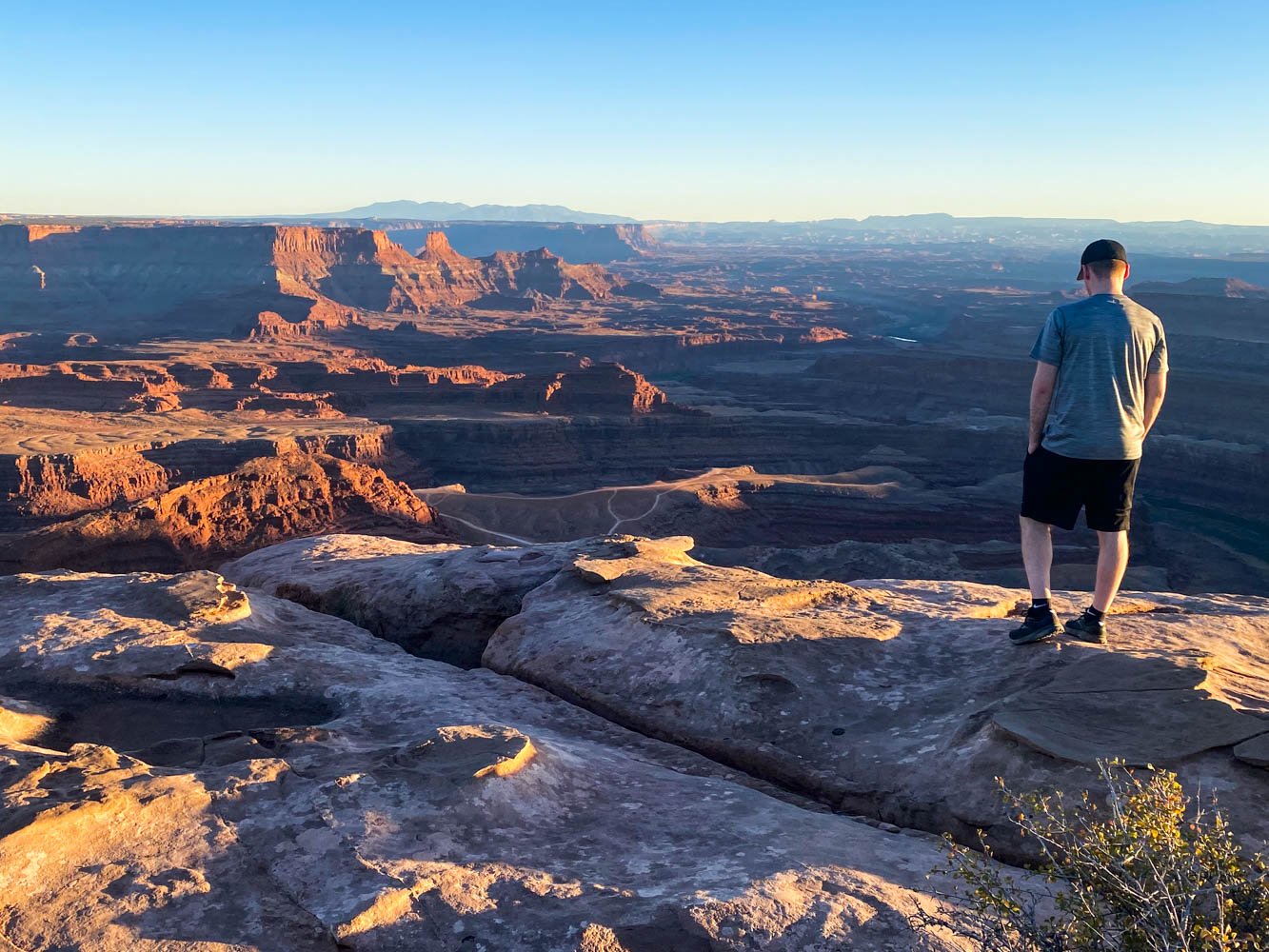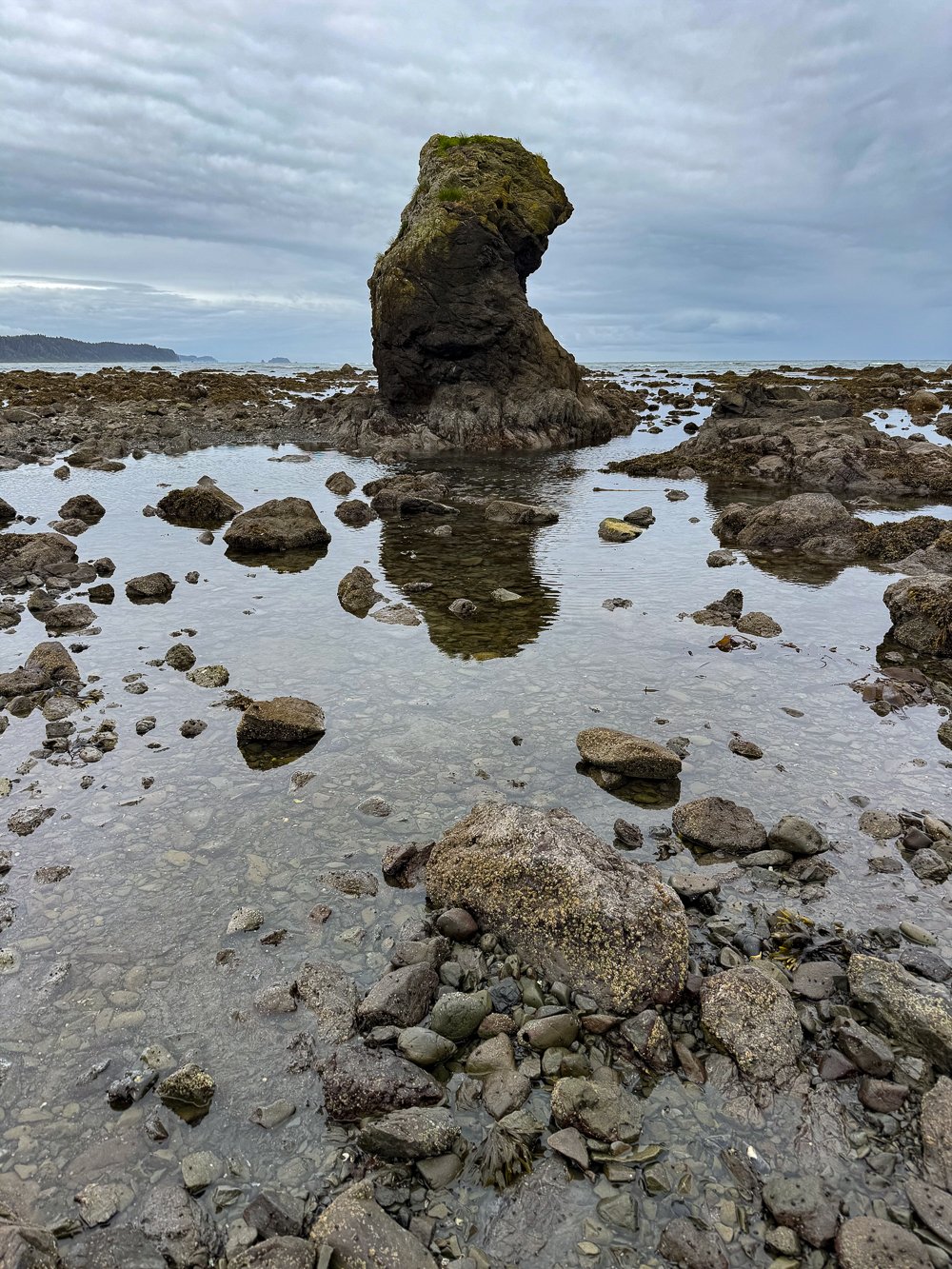How to Hike Safely During Wildfire Season
It’s that time of year again — what has come to be known as wildfire season throughout the last few years. Unfortunately, when wildfires start, how fast they spread, and where they and the smoke blows is unpredictable. When venturing outdoors in this season, we need to be more aware than ever and a bit of preparation and research before going out for a hike can save lives.
Here in Washington, wildfire season begins in May and extends to October, but we see the effects of smoke from wildfires as far away as British Columbia, California, and Montana throughout summer and other months as well.
In this blog we’ll be covering each of these topics:
When the sky is full of smoke particles, it makes for great sunrises and sunsets.
Air quality
What air quality you’re comfortable hiking in varies for everyone. Although it’s said to be unhealthy for everyone above 151, we prefer not to hike when the AQI (air quality index) is above 100 since the views won’t be great, poor air quality hurts our throats while hiking, and it tends to make us feel dehydrated quickly.
Air Quality Index
Good (green) 0 to 50
Moderate (yellow) 51 to 100
Unhealthy for sensitive groups (orange) 101 to 151
Unhealthy (red) 151 to 200
Very unhealthy (purple) 201 to 300
Hazardous (maroon) 301 and higher
Source: AirNow.gov
These are our favorite resources that show the AQI throughout the United States:
These sites show the AQI specific to Washington state:
Use the “select forecast date” slider bar in the upper lefthand corner of the map to see air quality predictions
Click “Find a hike near me”
In the Trailfinder app, click the button with three stacked squares in the top left and select “Today’s AQI Forecast”
On a desktop, select “Today’s AQI Forecast” in the top left.
Preparation
Just as you do in winter to access avalanche dangers, preparation is key to keeping safe during wildfire season, whether there is an active fire in the area already or not. To get up-to-date information on hikes you’re interested you can talk to the land managers or nearby ranger stations.
For Washington State, you’ll find the land manager under the map and directions section of each hike mentioned in Washington Trails Association. Nearby ranger stations will also have up-to-date information on wildfires in their region.
Wildfire smoke in the distance
Weather forecast
First, you should check the forecast. Go to the hike you’re interested in on Alltrails or Washington Trails Association and click “see weather forecast” to be taken to the hike’s nearest weather station. Notice the elevation where it’s reading the forecast at and compare it to the highest point on your hike. If your hike is higher than the elevation of the weather station there is a good chance that you’ll experience more extreme, colder, or windier weather than predicted at the weather station.
If thunderstorms are predicted near the area you’re interested in hiking at, don’t hike. 44% of wildfires in the Western United States are triggered by lightning. If there are burn bans, or red flag weather alerts in your area, these are signs that fire danger is severe.
Haze from wildfire smoke
Know the trail
As with any trail, read the trail description and recent trip reports before heading out. You should hike with a map of the area you’ll be in and be familiar with alternative routes and where the nearest roads and water sources are.
Ten essentials
Always hike with the ten essentials.
Navigation
Hydration
Nutrition
Rain gear and insulation
Firestarter
First aid kit
Tools
Illumination
Sun protection
Shelter
(Find recommendations for each of these in our packing list here.)
Backpacking safety
The longer you plan on backpacking, the more precautions you must take since you won’t have up-to-date information. Either plan your trip in an area where you know you’ll have reliable cell service to look up conditions yourself or use a satellite device to communicate with someone at home. Whoever you’re communicating with at home will need to know your itinerary, intended route, and what websites to check and report back to you with.
Respect trail closures
Lastly, if an area is closed due to wildfire activity, respect the closure. Trail closures are there to keep you safe and help keep the public from impeding firefighter efforts. Although the closures could be miles away from the burn area, there are many reasons to close a trail including terrain, wind direction, projected wildfire growth, or limited evacuation routes.
Often trails are closed after wildfires have ravaged through an area. Respect these closures as well. It’s dangerous to hike through burned forests with unstable trees and ground and it is easy to get lost in them. Keep our wilderness responders and firefighters safe by following the rules.
Hiking through a burned forest after the trail reopened.
Smoke predictions
If there are active wildfires in your greater area, you’ll want to pay attention to smoke predictions and wildfire locations.
Wildfire locations
Check InciWeb or Watch Duty to see where wildfires are, their size, and containment levels.
Smoke predictions
These maps show wind and smoke movement and predictions.
The brown line of clouds above the mountains is smoke.
Reporting a fire
Unfortunately, wildfires can start at any time. When you’re out hiking, you need situational awareness and the ability to access situations and change plans as necessary.
What does wildfire smoke look like?
Smoke can look like large, flat grey, brownish, or white clouds on the horizon. Closer fires may look like plumes of grey or white smoke. If you see either formations and wildfires weren’t there when you researched your hike before leaving, you need to head in the opposite direction and away from the flow of smoke, immediately. Pay attention to the smoke as you retreat. Wind directions and wildfires can change directions quickly.
Test your wildfire spotting skills from Sauk Mountain:
Is this a cloud inversion off in the distance or smoke?
It’s wildfire smoke. Check out the smoke plume visible from higher elevations.
Test your wildfire spotting skills with views from Mount St. Helens:
These are clouds, not smoke.
View from later in the day with a plume of smoke in the distance.
How to report a fire
If you see or smell smoke that cannot be traced to a campfire, call 911 if you have cell service, or use the SOS button on a satellite device to contact emergency services whether you have cell service or not.
Provide as much information as you can. Satellite devices will share your GPS coordinates but if you’re not using one, you can share things you know or that you’ve noticed along the trail like mile markers, the name of the ridge you’re on, or what national forest you’re in.
Emergency personnel should be able to tell you which direction to head to avoid walking in the direction the fire is headed.
What to do if you’re caught in a wildfire
Wildfires can move up to 14.27 miles per hour in grasslands and 6.7 miles per hour in forests (source). Fire travels uphill faster than downhill, so avoid ridgelines, saddles (low spots on ridges), and chutes which channel flames upward and intensify the heat. If you’re already on a ridgeline when a fire starts, head down the other side, away from the fire.
The less vegetation an area has the safer it will be. Recall what you’ve passed on your hike there and look for bodies of water, shelter in cleared areas, or among rockbeds.
Meadows are better areas to be in than forests, and a large flat rock or pumice flats are better yet. If you can, get in the water and hide behind big rocks or islands to protect against radiant heat. Murky water is more effective at blocking radiant heat than crystal-clear water.
If necessary, lie face down on the ground and cover your body with soil. Dig a hole for your face and keep your nose in the dirt.
Contrary to popular belief, do not cover your mouth and nose with a wet cloth. Moist air causes more damage to your airways than dry air, and dry cloth is ineffective at protecting your lungs from smoke. KN-95 masks may provide some benefit and we recommend carrying them in your emergency kit.
Make yourself seen
Hiking gear tends to be bright and for good reason — it can be seen from far away. If you’re in a safe location, take something large and bright, like your tent rainfly or emergency bivy (part of the ten essentials), and spread it on the ground to be seen from firefighting planes above. Orange, red, and silver are great colors to use. Wear your most colorful gear.
If you think you may have been seen by aircraft, stay in place and firefighters will attempt to rescue you. Do not start a “signal fire” to help firefighters locate you. They can be easily spread and turn into another major fire.
Please remember, you’re always responsible for your own actions. Use good judgment — the trails will always be there!
Search the blog for more adventures! Try searching for topics such as “camping”, “waterfalls”, or “Washington”.



















